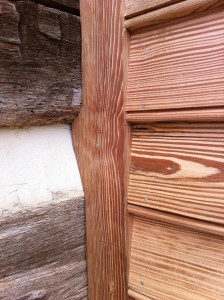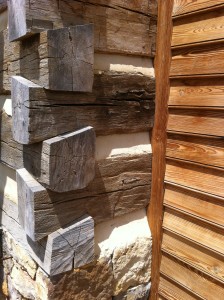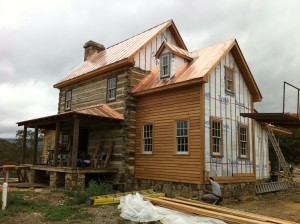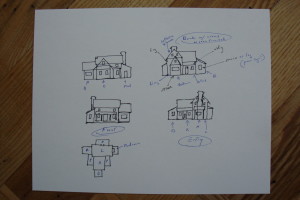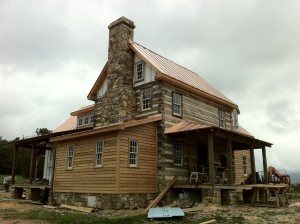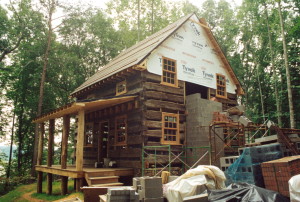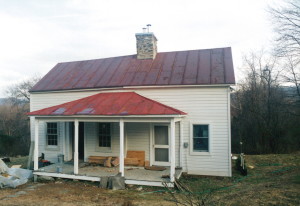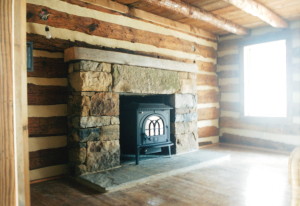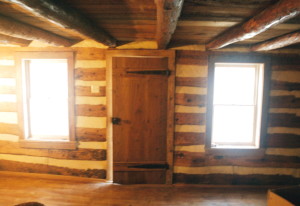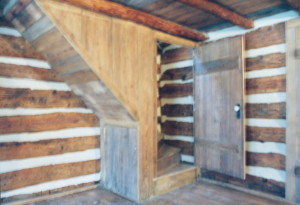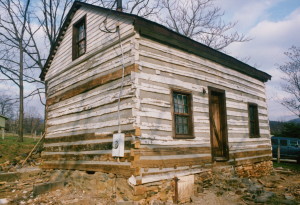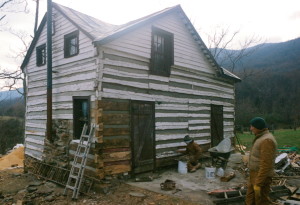Look even closer
Let’s look even closer at this corner.
The merging point, where an addition attaches to a log cabin, is always a challenging place to build correctly. Here the rigid lines of the addition meet the multiple materials and curved surfaces of the cabin.
I’ve seen some pretty sloppy examples over my years where differing structures come together and thus created opportunities for rot or even small creatures to enter the home.
Originally posted 2015-07-03 15:49:15.

